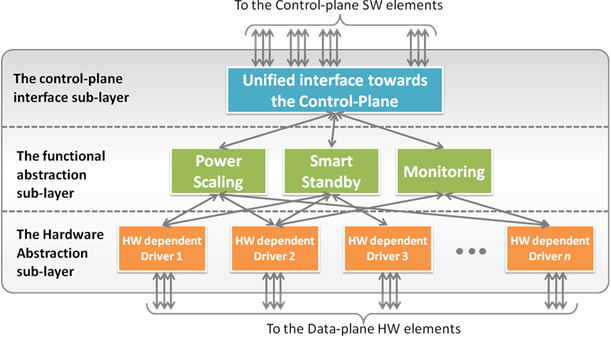Sophia Antipolis, 9 September 2014
A new ETSI Standard – the ‘Green Abstraction Layer (GAL)’ – enables operators for the first time to manage the energy consumption of telecom networks easily, offsetting network performance and capacity against energy costs.
Network efficiency is an important goal for telecommunications operators today but telecom management systems are not designed to be sufficiently flexible or scalable to manage such demands. Traditionally, to improve energy efficiency, operators have had to install more energy-efficient equipment, with consequent upgrading costs. Instead network device manufacturers and telcos have adapted their network capabilities – and hence their energy requirements – to actual traffic profiles: telecommunication equipment finds a system configuration with adequate power consumption, but there is no easy way to monitor or set this configuration.
Now ETSI has published ETSI Standard (ES) 203 237 – the ‘Green Abstraction Layer’ (GAL), opening the way to the managed energy efficient networks of the future. The GAL is an architectural interface/middleware that gives access to the green networking capabilities of specific devices. It is then able to adapt energy consumption to take account of load variations. The GAL offers a framework for information exchange between power-managed data-plane entities and control processes. It enables energy management protocols to determine consistently which power-management capabilities are available at the data-plane, their potential effects on both energy consumption and network performance, and how to interact with them. The protocols can then be insulated from the specific hardware features of underlying devices and still choose the most suitable energy configuration. As a result, operators can now dynamically seek better trade-offs between network performance, capacity and energy costs.
GAL-enabled applications can be developed easily and installed in telecom management systems to manage the energy efficiency of network devices. Like traditional network systems, the GAL supports the following main functionalities:
- discovery – to retrieve information about available energy configurations and other related information about a network device and its components
- provisioning – to set the energy configuration for a network device and/or its components
- monitoring of the physical devices and relevant parameters
The GAL was produced by ETSI’s Environmental Engineering Technical Committee (TC EE) with the support of the European ECONET project. Like all ETSI standards, the GAL standard (ES 203 237) is publicly available free of charge

